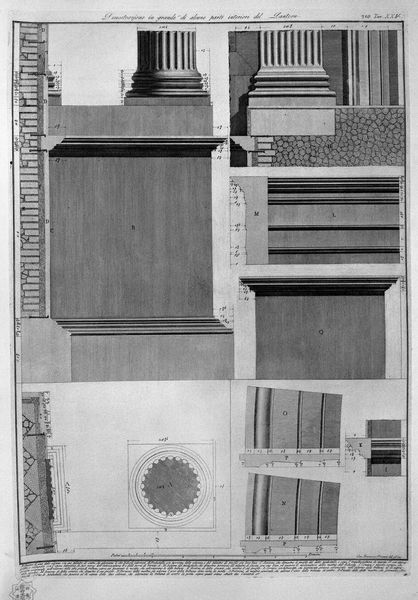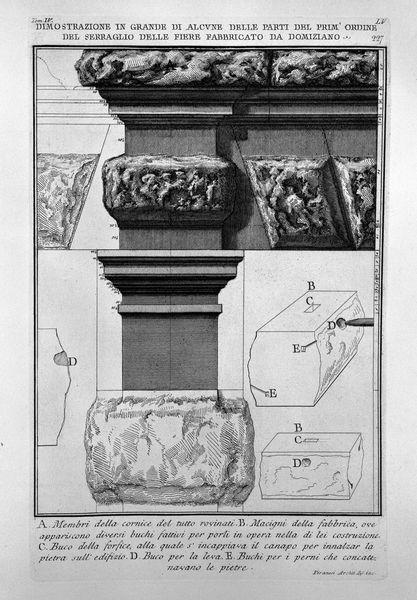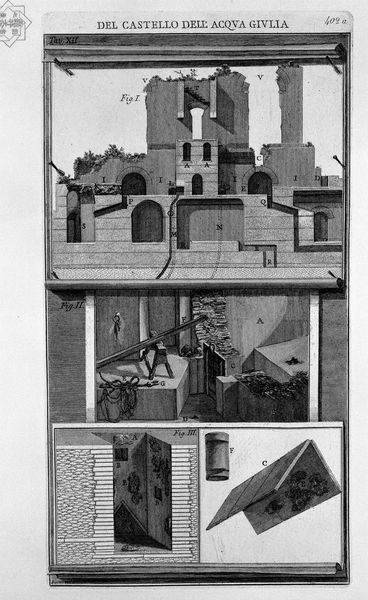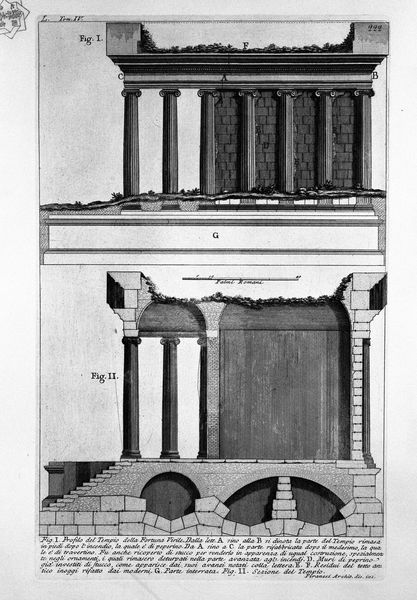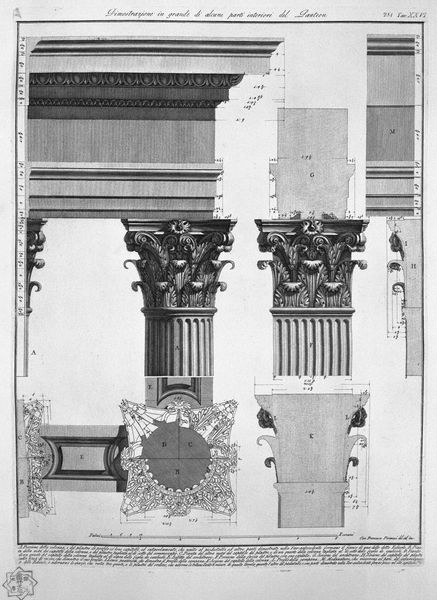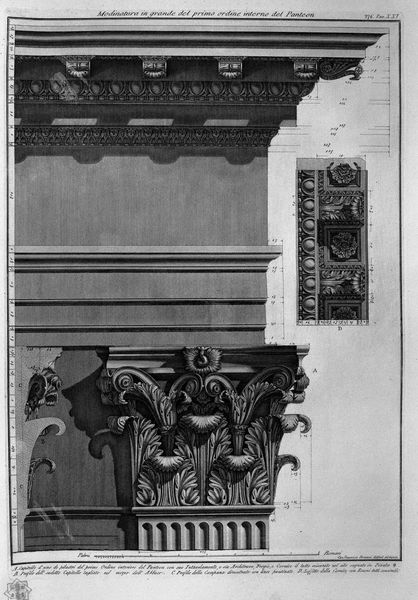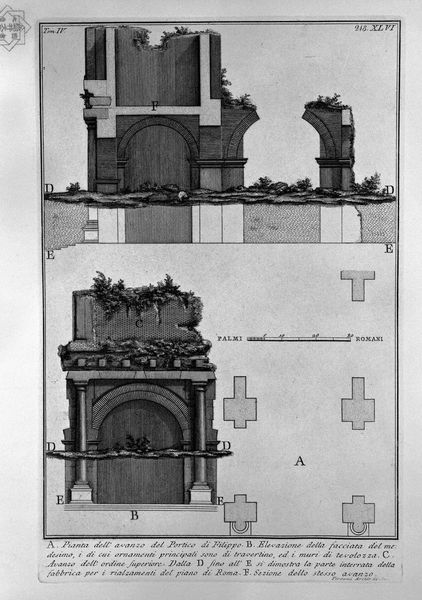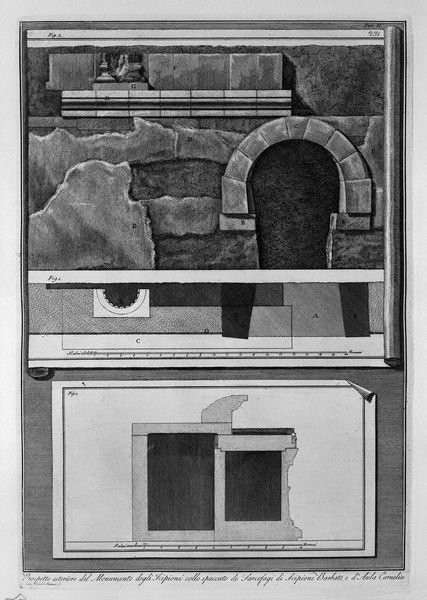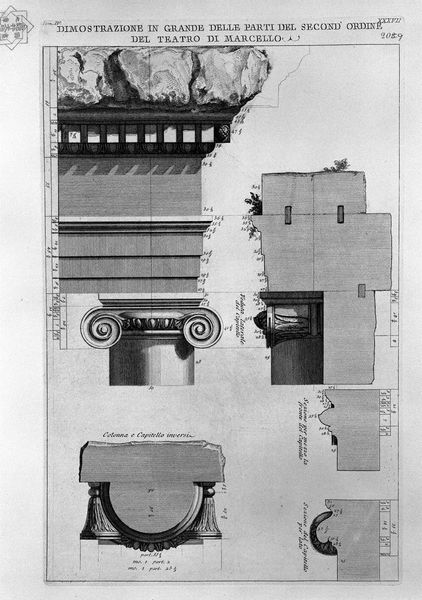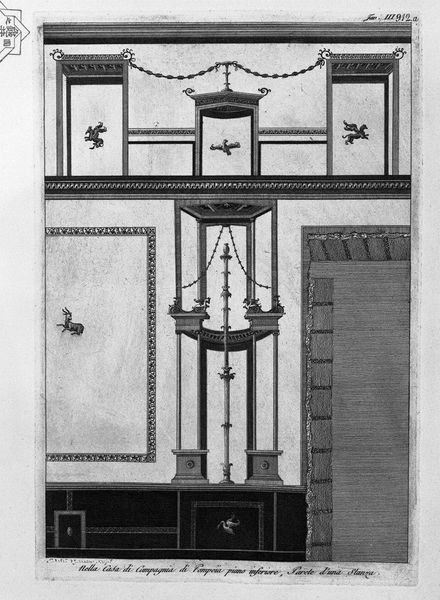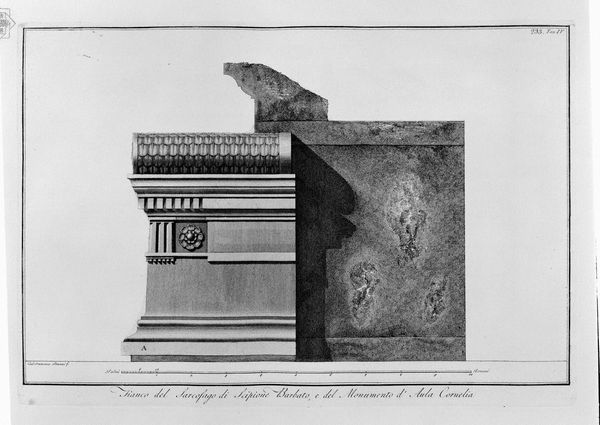
drawing, print, metal, engraving, architecture
#
drawing
#
neoclacissism
# print
#
metal
#
architectural plan
#
geometric
#
architectural section drawing
#
architectural drawing
#
architecture drawing
#
engraving
#
architecture
Copyright: Public domain
Giovanni Battista Piranesi rendered this etching, a profile section of a monument, in the 18th century. Dominating the composition are the bovine skulls, potent symbols deeply embedded in the cultural memory of Europe. These bucrania—ornamental skulls of oxen—evoke sacrificial rituals from antiquity. We see similar motifs adorning ancient Roman temples and altars. The bull, historically associated with fertility and power, undergoes a transformation here. Stripped of life, its skull becomes a memento mori, a stark reminder of mortality. Consider how this image intertwines the celebration of life with the acknowledgment of death, reflecting the cyclical nature of existence. Even in the Renaissance, artists integrated similar imagery, drawing upon these ancient symbols to communicate complex ideas about fate and the ephemeral nature of earthly existence. The emotional weight carried by these symbols is immense, engaging viewers on a subconscious level, stirring primal fears and philosophical reflections. They resurface, evolve, and take on new meanings, continuing their journey through time.
Comments
No comments
Be the first to comment and join the conversation on the ultimate creative platform.
